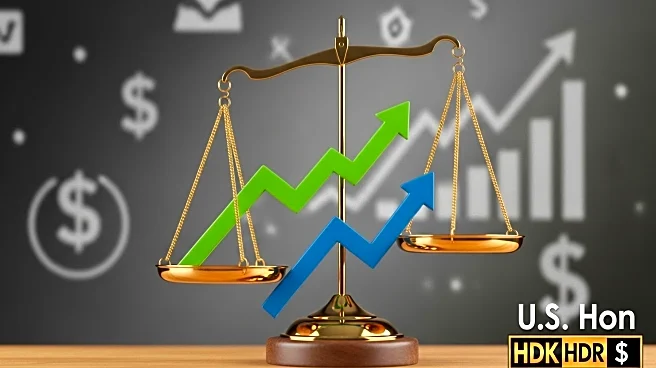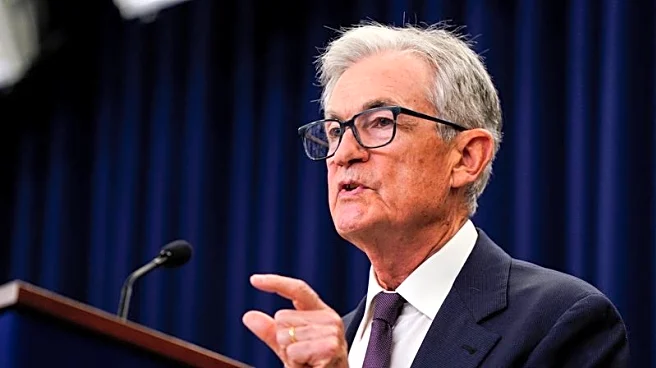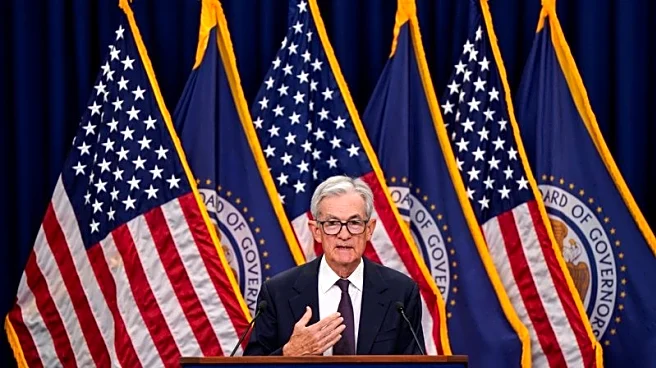What's Happening?
Federal Reserve Chair Jerome Powell addressed the complex situation facing the central bank, emphasizing the dual challenges of rising inflation and a weakening labor market. In a speech delivered in Rhode Island, Powell acknowledged the risks associated with both inflation and employment, stating that there is no risk-free path forward. He highlighted the potential consequences of easing monetary policy too aggressively, which could necessitate reversing course to achieve the Fed's 2 percent inflation target. Conversely, maintaining restrictive policies for too long could unnecessarily soften the labor market. Powell's remarks follow the Federal Reserve's recent decision to lower interest rates for the first time this year, setting them within a range of 4 percent to 4.25 percent. This move was described by Powell as a 'risk management' strategy aimed at safeguarding the labor market.
Why It's Important?
The Federal Reserve's approach to managing inflation and employment is crucial for the U.S. economy, impacting various sectors and stakeholders. Powell's cautious stance on interest rate adjustments reflects the delicate balance the Fed must maintain to avoid exacerbating inflation or weakening the labor market. The decision to cut rates is intended to mitigate risks to employment, but it also raises concerns about the potential for inflation to remain unchecked. This situation affects businesses, consumers, and investors, as interest rate changes influence borrowing costs, consumer spending, and investment decisions. The Fed's actions are closely watched by financial markets, which react to signals about future monetary policy, affecting stock prices and economic forecasts.
What's Next?
Market participants are closely monitoring the Federal Reserve's next moves, with expectations for further rate cuts in the near future. Traders are currently pricing in a high probability of another rate cut at the upcoming October meeting. The Fed's decisions will likely continue to influence market dynamics, particularly in sectors sensitive to interest rate changes, such as technology and finance. Stakeholders, including businesses and policymakers, will need to adapt to the evolving economic landscape shaped by the Fed's monetary policy. The central bank's ability to navigate these challenges will be critical in maintaining economic stability and fostering growth.
Beyond the Headlines
The Federal Reserve's policy decisions have broader implications beyond immediate economic indicators. The balance between inflation control and labor market support reflects deeper economic and social considerations, including income inequality and job security. The Fed's actions can influence public confidence in economic governance and affect long-term investment strategies. Additionally, the central bank's approach to monetary policy may set precedents for future economic challenges, shaping the framework for addressing inflation and employment in a rapidly changing global economy.











